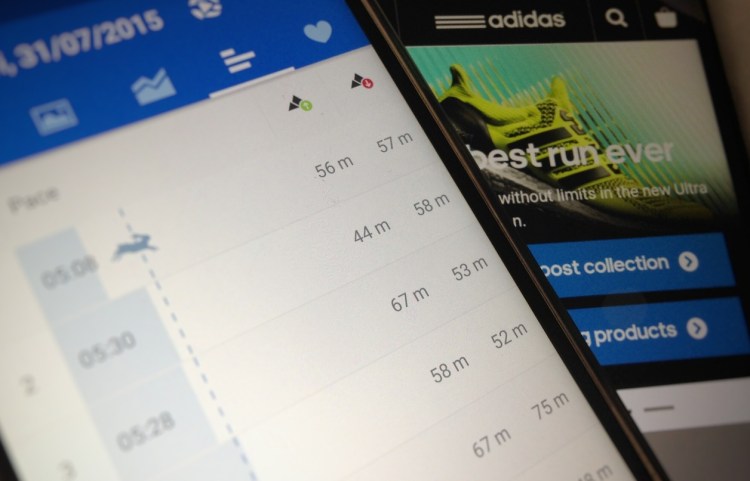Austria isn’t synonymous with big-money tech acquisitions, but Runtastic put the country firmly on the global startup map this month when it was snapped up for a cool $239 million by sports giant Adidas.
VentureBeat caught up with cofounder and CEO Florian Gschwandtner this week to get the lowdown on the deal — how it came about, and where things could go from here.
The story so far
It’s fair to say that Runtastic has come a long way since it was founded out of Linz, the third-largest city in Austria, by Gschwandtner and three friends back in 2009.
While the company is perhaps best known for its eponymous GPS fitness tracking app, it offers other apps for working out at home, improving your sleep, and building six-packs. Runtastic also entered the virtual reality (VR) realm with a new app for Oculus Rift.
Besides apps, Runtastic also offers hardware, with fitness-tracking wristbands, scales, heart-rate monitors, GPS watches, and smartphone mounts for bikes.
Enter Adidas
But what exactly sparked Adidas’s interest, and why sell now?
While big-name American brands such as Runkeeper and Nike+ are perhaps better-known globally, Runtastic has notched up 140 million downloads around the world, and claims 70 million registered users. Runtastic is a big company in its own right, one that often falls under the mainstream radar. It was its size that ultimately attracted the sports accessories behemoth, but Adidas wasn’t the only company sniffing around.
“After the acquisition that happened earlier this year, with Under Armour and those other players, some companies came knocking on our door,” said Gschwandtner.
The acquisition Gschwandtner is referring to is American sports clothing company Under Armour, which bought MyFitnessPal and Endomondo — two massive fitness platforms — for $560 million. It seems this might’ve prompted Adidas and others into action, and Runtastic was an obvious target.
While Gschwandtner couldn’t confirm which other companies, or how many, were showing interest, he did state that it was “more than a handful” from around the world, with talks kicking off around four months ago.
It’s also worth noting here that Runtastic had a majority shareholder in the form of Germany-based Axel Springer, one of Europe’s biggest media companies. The company bought a 50.1 percent stake in Runtastic back in 2013 for an enterprise value of €22 million ($25 million), with the Runtastic’s four founders, and a single angel investor, retaining the other 49.9 percent.
As events transpired, Axel Springer did rather well out of the deal, with Adidas paying €220 million ($239 million) to gain 100 percent control of the company. Divide that figure down the middle, and that’s not a bad return on Axel Springer’s initial investment two years ago.
To outsiders, however, Axel Springer and Runtastic was an odd pairing. Faced with interest from Adidas and others, Gschwandtner was in a position where he had to decide whether staying semi-independent or becoming a fully owned subsidiary would be the best way forward. “We said [to ourselves], our company is doing well, we’re growing in a very good way, we have 140 people now, we’re very profitable, and we have a very good roadmap,” continued Gschwandtner. “But if we find a more advanced strategic partner than Axel Springer, we would like to do it in a way that we feel good.”
Runtastic brought in a partner to help manage meetings with various interested companies but by the end there was only one real contender. “We figured that Adidas is a very good strategic fit for Runtastic — we saw the German culture, and they’re just three-and-a-half hours away from our HQ by car,” said Gschwandtner. “And there’s this common understanding — building something big, German engineering, that was just a really, really good fit.”
It’s interesting that sometimes a decision such as this can come down to simple practicalities, such as Adidas being a short commute over the border from Linz.
The future
With the acquisition now fully signed and sealed, what does the future hold for Runtastic as an Adidas company? Gschwandtner is adamant it will remain “independent” in spirit and physicality — the headquarters shall remain in Austria. But with €14.5 billion in revenues last year across the Adidas group, Runtastic is in good company, and Runtastic promises “some big improvements” in the future.
While Gschwandtner didn’t commit to any specific new products, he did give a hint as to what might come in the future.
“People always asked me, ‘Flo, when are you building the Runtastic running shoe,’ and I’d say that’s probably never going to happen,” he said. “But now with Adidas, there are many, many new possibilities on how they can help us, and we can help them to build even better products.”
For a company that started as a simple GPS fitness app six years ago, to now be talking in terms of connected running shoes is remarkable. If nothing else, it helps illustrate why startups do agree to join larger companies — it opens the door to many more possibilities.
“There are many things we can connect, and I think their [Adidas] knowledge in building the perfect running shoe and the perfect apparel, combined with our digital knowledge, could lead to something great in the future that helps you understand your way of running better,” added Gschwandtner. “There are so many potential synergies.”



